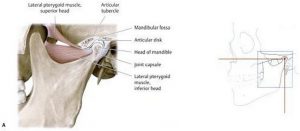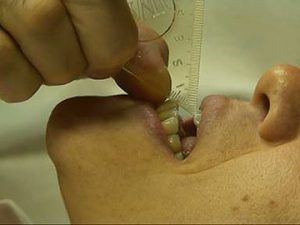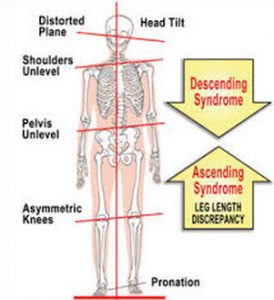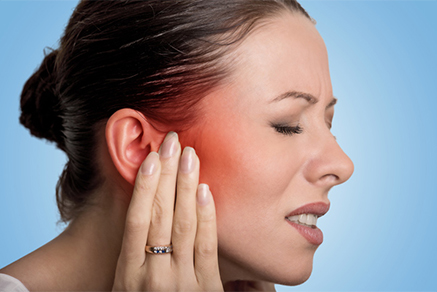TMJ SYNDROME TREATMENT
The integrative approach to TMJ Dysfunction allows the therapist to normalize the soft tissues of the TMJ and related structures. However, techniques utilized are not limited to only the TMJ area. Our treatments provide numerous benefits to those with speech pathologies, swallowing difficulties, and pain due to trauma of the face.
During the initial assessment, your therapist is continuing to understand the complex issues of head and TMJ pain and how it is associating with misalignment of the patient’s posture. Your therapist will detect muscular imbalances that lead to clicking and popping of the joint and will correct them to increase range of motion, therefore decreasing pain associated with these two problems. The mechanics of the TMJ, and how the Lovett Reactor Relationship is key to understanding dysfunction of the joint, or how the joint can be the cause of cervical pain or even pelvic imbalances.
TEMPOROMANDIBULAR JOINT (TMJ) TREATMENT WITH NEUROSOMATIC THERAPY
Clicking, popping and deviations in the movement of the jaw are common but only considered TMJ disorder when they are accompanied by pain.
· Proper function of the TMJ is highly dependent on balanced positioning of the cranium.
· Postural distortions elsewhere in the body can perpetuate TMJ pain.
· Asymmetrical posture can lead to the asymmetrical wear and tear on the TMJ.
· The National Institute of Health recommends non-surgical treatment for TMJ dysfunction whenever possible.
 CAUSES OF TMJ DISORDER
CAUSES OF TMJ DISORDER
Proper function of the jaw depends on two components – the temporomandibular joint on either side of the head. The jaw is unique as compared with other joints of the body, as it is suspended from the rest of the cranium by ligaments and muscles. Because of this, the position and function of the TMJ is almost entirely dependent on the position and alignment of the cranium. Any imbalances of the head or distortions of the cranium itself can lead to temporomandibular joint disorder.
Our study of posture and application of Neurosomatic therapy has led us to conclusions that problems with TMJ usually have their origins somewhere else in the body. Even in cases where TMJ pain is triggered by trauma or grinding of the teeth, postural distortion seems to be a perpetuating factor. Overall TMJ syndrome is an issue of postural distortion and needs to be addressed as such by looking at the body as a single functional unit.
Traditional Treatment of TMJ
 The National Institute of Dental and Craniofacial Research (NIDCR) of the National Institutes of Health (NIH) recommends that treatments for TMJ disorder should be reversible whenever possible. Treatments may include medications for pain, stretching exercises and movement therapies, surgery and stabilizing or re-positioning splints.
The National Institute of Dental and Craniofacial Research (NIDCR) of the National Institutes of Health (NIH) recommends that treatments for TMJ disorder should be reversible whenever possible. Treatments may include medications for pain, stretching exercises and movement therapies, surgery and stabilizing or re-positioning splints.
We have found that patients who are given these therapies have limited success as they tend to be focused on the function of the TMJ only. To treat TMJ Syndrome properly, the underlying postural distortions must be eliminated if these therapies are to be successful.
Treat the Root Cause of TMJ

The Neurosomatic therapy treatment approach to correcting TMJ syndrome combines treatment directly to the painful areas of the jaw and head, along the imbalances of the pelvis, spine, cranium that contribute to this dysfunction. Currently, it is now more common that TMJ specialists are recommending non-surgical approaches to treating TMJ dysfunction. Past results have shown that patients receiving surgical procedures have not been effective. The focus of a surgical procedure is specifically on the TMJ and fail to address factors that caused the dysfunction in the first place. It cannot be stated enough: The correction of postural distortion provided by Neurosomatic Therapy is vital in successful treatment of TMJ dysfunction.
ADDRESSING THE CAUSE OF TMJ

Postural distortions promote improper TMJ movement, therefore, multiple things happen: The muscles that move the jaw develop a spasm/ strain causing imbalances – some muscles become contracted while some are stretched creating imbalances, therefore causing pain. This can lead to uneven joint pressures that are causing asymmetrical wear patterns in their structure.
The Neurosomatic Therapist will treat the TMJ by treating the whole system as one; Relieve the TMJ pain by eliminating spasm and imbalances directly in the jaw and surrounding cranium ligaments in addition realign and correct posture to ensure long-term pain relief from TMJ treatment.
For More Information on TMJ Treatment
Contact: Stan Margerum at NC Functional Therapeutics
www.NCFunctionalTherapy.com Phone: (919) 694-7221


Recent Comments